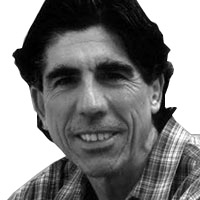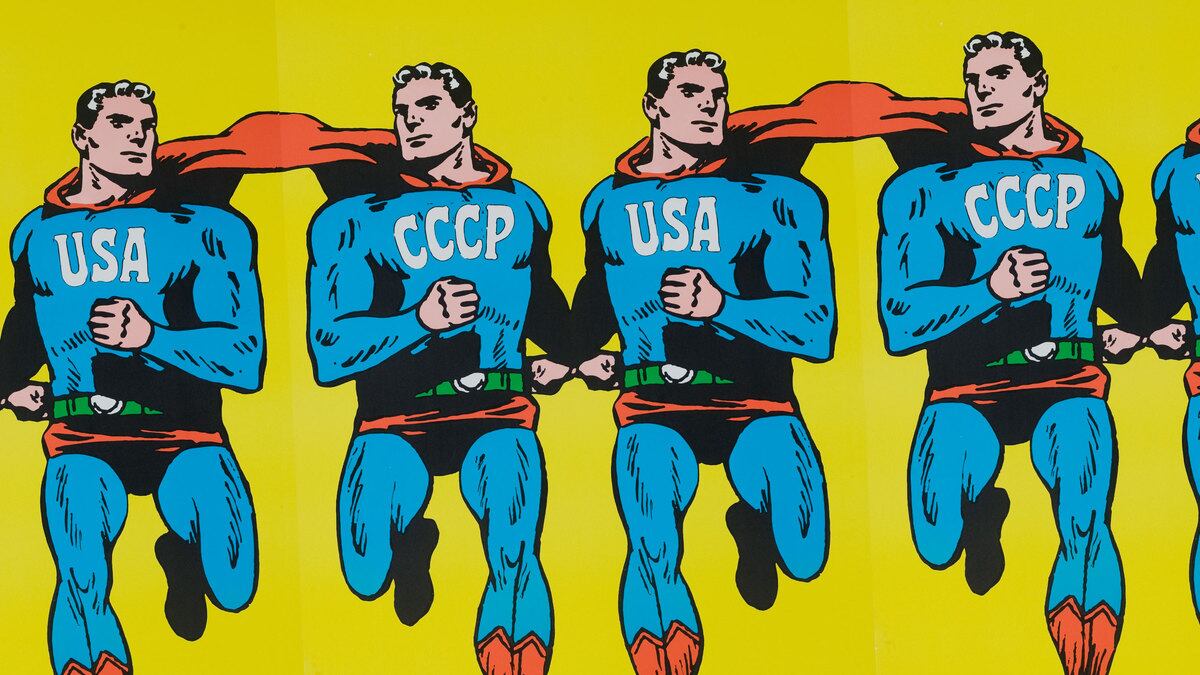The conclusion of World War II brought with it unprecedented economic power for America. It was in this respect a golden age for the United States—a time that still fascinates us when we think of our diminished international role today. By the end of the 1940s, the United States, with just 7 percent of the world’s population, commanded 42 percent of the world’s income. As most of the industrialized world struggled to recover from World War II, America, which had gone through the war with its mainland free from bombing and invasion, was producing 57 percent of the world’s steel, 43 percent of its electricity, and 82 percent of its cars.
Accompanying America’s newfound economic and military power was the rise of a culture in which American art, music, and literature gained outsized importance. This cultural flourishing, along with its relationship to Western European culture in the years from 1945 to 1965, is the focus of Louis Menand’s far-reaching new book, The Free World: Art and Thought in the Cold War. At a time when so much of America’s intellectual and artistic life seems dominated by the bitter cultural warfare that divides us politically, the period Menand writes about is easy to envy.
It is also a period that is easy to sentimentalize because of its outward simplicity. Mass culture was contained within the boundaries of radio, movies, and the still-young television and music industries. People wrote letters and sent Christmas cards, and decades away was the digital revolution that would give Donald Trump unparalleled demagogic powers as president.
Menand’s focus, as he makes clear from the start, is not Cold War culture as propaganda or an instrument of foreign policy. It is Cold War culture as “the product of the Free World.” Menand is the author of The Metaphysical Club, a Pulitzer Prize-winning history of the American pragmatists who came to prominence after the Civil War, and in The Free World he has taken on an even broader subject, turning out a book that in his words is “a little like a novel with a hundred characters.”
Menand has taken on such a wealth of trends and ideas that it is not always clear what his guiding line for inclusion and exclusion was. Why include the innovative modern dance of Merce Cunningham, for example, but not the innovative modern ballet of George Balanchine? Why include the attack on middle-class conformity in Jack Kerouac’s On the Road but not the attack on middle-class conformity in J. D. Salinger’s The Catcher in the Rye?
The size of Menand’s book has not, however, dulled his writing. Menand is not only an engaging critic. He is a superb thumbnail biographer. His book is bound to be required reading for anyone who wants to understand mid-20th-century America. The men and women he writes about come surrounded by their life stories, whether they are grim stories, as in the case of literary scholar Paul de Man, who in his youth wrote for a Nazi newspaper, or engaging stories, as in the case of James Baldwin, whose high school friendship with fashion photographer Richard Avedon led to a joint book project.
The Free World tells a tale of loss and gain. In 1945 there was, Menand argues, widespread skepticism about the value of American art and ideas, but the motives and intentions of the American government were respected. After 1965, those attitudes were reversed, Menand believes. “The United States had lost political credibility,” he writes, “but it had moved from the periphery to the center of an increasingly international artistic and intellectual life.”
In writing about this cultural transformation, Menand makes use of the contrast philosopher Isaiah Berlin first drew in a 1958 Oxford lecture between negative and positive freedom. For Berlin, negative freedom was “freedom from” the external forces of coercion while positive freedom was “freedom to” reach for particular ends. For Menand both these freedoms are crucial to the culture he describes in The Free World. He sees these two versions of freedom constantly complementing each other—for example, in how the Abstract Expressionism of Jackson Pollock challenged the conventions of realist painting to offer a new aesthetic.
The book’s first chapter focuses on diplomat and scholar George Kennan, who in his 1947 Foreign Affairs essay “The Sources of Soviet Conduct” put forward a strategy for containing the Soviet Union that called for a series of selected—but limited—diplomatic and economic confrontations with the Soviet Union. But after his opening chapter, Menand does not build his book around a year-by-year chronology of the period he covers. Instead, he explores a series of cultural turning points by zigzagging among them.
A case in point, Menand’s chapter “Outside the Law” pairs Hannah Arendt’s 1951 study The Origins of Totalitarianism with David Riesman’s 1950 bestseller The Lonely Crowd. Arendt’s concern with Hitler and Stalin and Riesman’s concern with conformity, particularly in the America of his time, seem miles apart. Yet, Riesman was fascinated with Arendt’s writing and reviewed The Origins of Totalitarianism for Commentary. In The Free World, Menand notes the criticisms Riesman had of Arendt, but he sees as far more compelling the preoccupation each had with the individual’s loss of autonomy and the political danger that lost autonomy posed even for a stable country like America.
A few chapters after his discussion of Arendt and Riesman, Menand brings a similar freshness to his analysis of curator Edward Steichen’s blockbuster 1955 Museum of Modern Art photography exhibition, The Family of Man. The exhibition contained 503 photographs by 273 photographers from 68 countries. The aim of the exhibit, as its catalog declared, was to illustrate “the essential oneness of mankind throughout the world.” For the exhibit’s critics, The Family of Man was journalism and an assault on fine-arts norms. Menand takes careful note of this criticism, but what shapes his insightful analysis is his linkage of The Family of Man to anti-colonialist and egalitarian impulses underlying the postwar writing of French anthropologist Claude Lévi-Strauss.
Menand’s analysis of rock ’n’ roll takes an unexpected turn as well, beginning with his observation that in the middle 1950s the United States with 84 percent of its high school-age students in school, compared to 17 percent in the United Kingdom and 16 percent in Western Europe, was perfectly positioned for rock to flourish among its teenaged population. From Little Richard to Elvis Presley to the Beatles, the rock stars of the era have a place in The Free World. But as Menand details how rock ‘n’ roll evolved from rhythm and blues, with its identification with Black musicians and Black audiences, to a style of music embraced by white audiences, he makes sure to give the business side of rock ‘n’ roll its due. In his narrative Sam Phillips, who in his small Sun Studio in Memphis gave Elvis Presley a chance to make a record and have it distributed, acquires new importance, as does Alan Freed, a Cleveland disc jockey who began promoting rhythm and blue music for white audiences. For Menand the promotion of rock is inseparable from its success.
By the end of The Free World, the pleasure that Menand has taken from assembling such a wide range of material is unmistakable. We see why he wrote in his preface of the era he describes, “People cared. Ideas mattered. Painting mattered. Movies mattered. Poetry mattered.”
In his final chapter Menand returns to George Kennan and the criticism Kennan offered in 1966 before the Senate Foreign Relations Committee of America’s conduct of the Vietnam War. But this chapter of The Free World is primarily a mournful account of the damage the Vietnam War inflicted on America. The influence of the artists and writers Menand admires was not enough to stop America’s entry into Vietnam, where by 1966 American troop strength was nearly 400,000. “Much as the First World War did for European modernism, the War in Vietnam disrupted the artistic and critical avant-garde of its time,” Menand concludes. “Vietnam not only shattered the image of American invincibility. It meant that a whole generation grew up looking on the United States as an imperialist, militarist and racist power.”
Nicolaus Mills is professor of literature at Sarah Lawrence College and author of Winning the Peace: The Marshall Plan and America’s Coming of Age as a Superpower.







